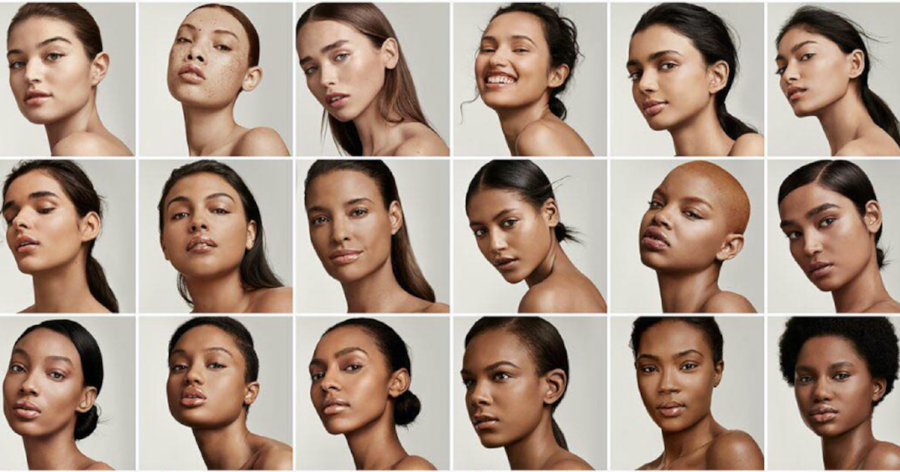
image: Fenty Beauty
After quietly working with law enforcement authorities from nine European Union countries for almost a year, the European Union Agency for Law Enforcement Cooperation – better known as Europol – hauled more than 250 individuals into court this spring, with more to come, it says. The charges: selling counterfeit goods, ranging from copycat designer bags to “powerful and addictive prescription drugs” to social media users. The effort, which has earned the title of the largest-ever European law enforcement operation against illegal online marketplaces selling counterfeit goods, is called “Operation Aphrodite.”
Months of cooperation with law enforcement from Belgium, Bulgaria, Cyprus, Greece, Ireland, Italy, Portugal, Spain and the United Kingdom culminated in the Europol seizure of more than 20,000 packages containing counterfeit goods and closure of more than 1,000 accounts tied to the sale of counterfeits, with investigations still ongoing. In addition to counterfeit pharmaceuticals and fake designer bags, Europol confirmed that the products confiscated as part of Operation Aphrodite include counterfeit sportswear, cosmetics, phones, designer clothes, jewelry, eyewear, watches, and IPTV set-top-boxes.
A spokesman for the Hague-headquartered agency said that in most instances, the products themselves were advertised on social media platforms, with the transactions being completed by way of separate messaging apps and with payment being made with prepaid cards or Paypal. The products were then shipped individually through the mail or delivered via courier, methods that have increasingly enabled counterfeits to go undetected by law enforcement, compared to the traditional bundling of millions of dollars of fake goods destined for retail.
“With the explosion of online shopping, everybody is very used to ordering from online platforms, and you can order direct from manufacturers, from source countries like China,” Matt Cope, head of Digital Technology Policy with Britain’s Intellectual Property Office, said last year. Not only is it becoming more difficult for consumers to distinguish between authentic and counterfeit goods, “it is harder [for law enforcement] to track a larger number of small parcels than a smaller number of large shipping containers.”
The Europol representative emphasized that “the internet continues to be a major facilitator of intellectual property crime, particularly as it utilizes new and emerging platforms, such as social media, which have made it easier to post and share offerings for counterfeit goods and pirated content to an expanding audience.”
These social media-centric developments come at a time when many “consumers see fakes as ‘fun’ and feel clever to buy sunglasses or sneakers that look like the real thing but cost a fraction of the price,” according to a 2017 Associated Press report. The World Intellectual Property Organization furthered this notion, saying that younger generations are simply less opposed to buying fakes than older ones, partially due to the influx of limited-edition wares that are dominating the fashion industry and also because they simply are not aware of the dangers that come with fakes.
“Consumers are used to the idea of fake handbags and even fashion counterfeits, which alone amount to some $3.24 billion worth of lost sales annually,” according to London-based intellectual property attorney Mary Bagnall. “What consumers are probably less aware of is the danger of counterfeits in relation to other products — I’m talking now about pharmaceuticals, I’m talking about cosmetics.”
And these are some of the types of goods for which counterfeiting is growing significantly. In addition to the global proliferation of subpar and fake prescription drugs, counterfeit cosmetics are also at a high, coinciding with a rise in consumer spending on buzzy direct-to-consumer beauty products.
In connection with a 2016 bust of more than $1 million in counterfeit cosmetics – which was the result of a two-year effort by U.S. Immigration and Customs Enforcement (“ICE”) – a spokesman for the government entity stated, “We are seeing more counterfeit beauty products and cosmetics.” Unsurprisingly, some of the most heavily-copied goods in this area are Kylie Cosmetics, Rihanna’s Fenty Beauty offerings and those from buzzy millennial brand Glossier, among other brands with particularly social media-centric marketing strategies.
Counterfeit cosmetics prove especially troubling as laboratory tests have consistently revealed that fake perfume often contains poisonous chemicals, including cyanide, human urine, and rat droppings, while fake cosmetics, such as eyeliner, mascara, lip gloss and foundation, have been found to contain toxic levels of chemicals and harmful substances such as arsenic, mercury and lead. All of these elements can cause allergic reactions, including but not limited to skin irritation, swelling, rashes and burns, in addition to other longer term health problems. Counterfeit sunscreen is also particularly hazardous in that it has been found to contain little or no SPF at all, and as a result, offers little – if any – protection against harmful UV rays, which could lead to long term skin damage.
ICE says that law enforcement is working overtime to stomp out the import of counterfeit cosmetics, but brands still need to be taking active measures to address the influx of fakes. “The sooner a company puts a real plan of action in place to protect their brand’s distribution channels against grey market trading and their products from loss of revenue resulting from counterfeiting, the more chances they have to thrive and stand out in today’s competitive marketplace,” says Laura Urquizu, CEO of online brand protection firm Red Points.











